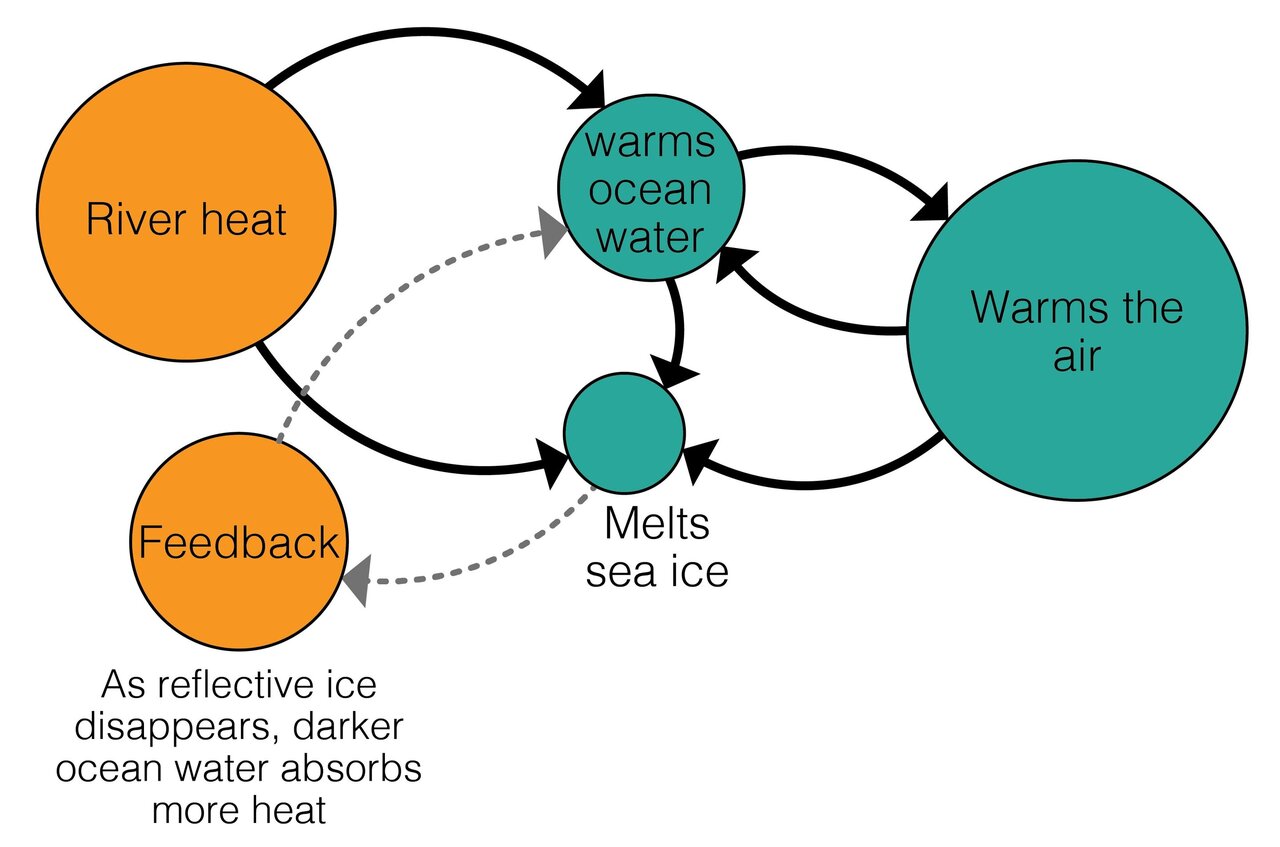A new study shows that increased heat from Arctic rivers is melting sea ice in the Arctic Ocean and warming the atmosphere.
According to the research, major Arctic rivers contribute significantly more heat to the Arctic Ocean than they did in 1980. River heat is responsible for up to 10% of the total sea ice loss that occurred from 1980 to 2015 over the shelf region of the Arctic Ocean. That melt is equivalent to about 120,000 square miles of 1-meter thick ice.
Rivers have the greatest impact during spring breakup. The warming water dumps into the ice-covered Arctic Ocean and spreads below the ice, decaying it. Once the sea ice melts, the warm water begins heating the atmosphere.
The research found that much more river heat energy enters the atmosphere than melts ice or heats the ocean. Since air is mobile, this means river heat can affect areas of the Arctic far from river deltas.
 This diagram shows the relative amount of warming caused by Arctic rivers, with the sources of heat in orange and the heat sinks in turquoise. In spring, rivers flow into the Arctic Ocean, warming the water and melting sea ice, which in turn warms the atmosphere. A feedback occurs as the reflective ice disappears, allowing the dark ocean water to absorb more heat and melt more sea ice. Credit: Graphic adapted from Science Advances paper
This diagram shows the relative amount of warming caused by Arctic rivers, with the sources of heat in orange and the heat sinks in turquoise. In spring, rivers flow into the Arctic Ocean, warming the water and melting sea ice, which in turn warms the atmosphere. A feedback occurs as the reflective ice disappears, allowing the dark ocean water to absorb more heat and melt more sea ice. Credit: Graphic adapted from Science Advances paperThe impacts were most pronounced in the Siberian Arctic, where several large rivers flow onto the relatively shallow shelf region extending nearly 1,000 miles offshore. Canada's Mackenzie River is the only river large enough to contribute substantially to sea ice melt near Alaska, but the state's smaller rivers are also a source of heat.
Increasing riverine heat influx triggers Arctic sea ice decline and oceanic and atmospheric warming,
Science Advances (2020).
https://advances.sciencemag.org/content/6/45/eabc4699
